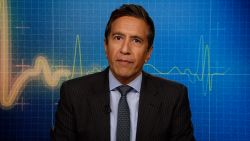Surgeon General Cancer Warnings

The Surgeon General's warnings about cancer have played a pivotal role in public health communication, shaping public perception and awareness regarding the devastating impact of cancer. These warnings, prominently displayed on cigarette packs and other tobacco products, serve as a stark reminder of the health risks associated with tobacco use. In this article, we delve into the history, impact, and future implications of these warnings, exploring how they have influenced public health campaigns and tobacco control efforts worldwide.
The Evolution of Surgeon General’s Cancer Warnings

The Surgeon General’s Office has been at the forefront of disseminating critical health information to the American public for decades. One of its most significant contributions is the issuance of cancer warnings, particularly in relation to tobacco products. The journey of these warnings began in the 1960s, a time when the link between tobacco use and cancer was becoming increasingly apparent.
The first Surgeon General's report on smoking and health was released in 1964, marking a pivotal moment in the battle against tobacco-related diseases. This report, authored by Dr. Luther Terry, unequivocally stated that smoking causes lung cancer and other serious health issues. It served as a wake-up call to the nation, sparking a chain of events that would ultimately lead to the implementation of cancer warnings on tobacco products.
Initially, the warnings were relatively simple and straightforward. The first warning, introduced in 1965, stated: "Caution: Cigarette Smoking May Be Hazardous to Your Health". While this warning was a step in the right direction, it lacked the urgency and specificity that would later become essential in communicating the risks of tobacco use.
Over the years, the Surgeon General's Office refined and strengthened these warnings. In 1970, the warning was updated to: "Warning: The Surgeon General Has Determined that Cigarette Smoking Is Dangerous to Your Health". This warning was more direct and assertive, leaving little room for interpretation. It was a significant step towards raising awareness and prompting smokers to reconsider their habits.
The Impact on Public Awareness and Behavior

The introduction and subsequent evolution of Surgeon General’s cancer warnings had a profound impact on public perception and behavior. These warnings, strategically placed on cigarette packs, served as constant reminders of the health risks associated with smoking.
Research has shown that cancer warnings have been effective in increasing public awareness about the dangers of tobacco use. Studies conducted by the Centers for Disease Control and Prevention (CDC) revealed that a substantial portion of the population, particularly smokers, noticed and read these warnings. Moreover, the warnings acted as a catalyst for behavior change, with some smokers reporting that the warnings motivated them to quit or reduce their tobacco consumption.
Additionally, the warnings played a crucial role in shaping public discourse and policy. They provided scientific backing for tobacco control advocates, strengthening their arguments and leading to the implementation of various tobacco control measures, such as smoking bans in public places and higher taxes on tobacco products.
The Science Behind the Warnings
The Surgeon General’s Office bases its cancer warnings on extensive scientific research and evidence. Over the years, numerous studies have unequivocally linked tobacco use to a wide range of cancers, including lung, throat, bladder, and pancreatic cancer, among others.
Tobacco smoke contains a complex mixture of chemicals, many of which are known to be carcinogenic. These chemicals, when inhaled, damage the cells in the body, leading to genetic mutations and the development of cancerous tumors. The longer an individual is exposed to these harmful substances, the greater their risk of developing cancer.
Furthermore, the warnings also highlight the addictive nature of nicotine, a key component of tobacco products. Nicotine is highly addictive, making it challenging for smokers to quit, even when they are aware of the health risks. This aspect of tobacco use is often emphasized in Surgeon General's reports, aiming to provide a comprehensive understanding of the challenges faced by smokers who wish to quit.
International Impact and Collaboration
The Surgeon General’s cancer warnings have not only influenced public health initiatives within the United States but have also served as a model for similar efforts worldwide. Many countries have adopted similar warning labels on tobacco products, recognizing the importance of disseminating health information to their citizens.
International organizations, such as the World Health Organization (WHO), have played a pivotal role in promoting the adoption of cancer warnings globally. The WHO's Framework Convention on Tobacco Control (FCTC), an international treaty aimed at reducing tobacco-related harm, has encouraged countries to implement strong warning labels on tobacco products. The Surgeon General's reports and warnings have been instrumental in shaping the recommendations and guidelines outlined in the FCTC.
Future Implications and Innovations

As we move forward, the Surgeon General’s Office continues to innovate and adapt its cancer warnings to meet the evolving needs of public health communication. With the rise of electronic cigarettes and other novel tobacco products, the focus has shifted to addressing the health risks associated with these new forms of tobacco consumption.
In recent years, the Surgeon General's Office has released reports specifically addressing the health consequences of e-cigarettes and vaping. These reports have warned about the potential health risks, particularly for young people, and have emphasized the need for continued research and regulation in this emerging field.
Furthermore, the office has embraced digital technologies to enhance the impact of its warnings. Interactive websites, social media campaigns, and educational resources have been developed to reach a wider audience, particularly younger individuals who may be more susceptible to the marketing tactics of the tobacco industry.
In conclusion, the Surgeon General's cancer warnings have been a cornerstone of public health communication, raising awareness and prompting behavior change among smokers. Through their evolution, these warnings have saved countless lives and contributed to the global effort to reduce tobacco-related harm. As we continue to face new challenges in tobacco control, the legacy of these warnings serves as a reminder of the power of science-based public health initiatives.
How often are Surgeon General’s cancer warnings updated?
+Surgeon General’s cancer warnings are updated periodically, typically when new scientific evidence becomes available or when there is a need to address emerging public health concerns. The timing of updates can vary, but they are usually released every few years to reflect the latest research and insights.
What other health risks are addressed by Surgeon General’s warnings?
+Surgeon General’s warnings extend beyond cancer to cover a range of health issues associated with tobacco use. These include heart disease, stroke, respiratory diseases, and the impact of secondhand smoke. The warnings aim to provide a comprehensive overview of the health risks associated with tobacco consumption.
How effective are cancer warnings in reducing tobacco use?
+Research suggests that cancer warnings play a significant role in reducing tobacco use. They have been shown to increase awareness, prompt behavior change, and contribute to tobacco control efforts. However, their effectiveness can vary depending on factors such as the strength of the warning, its placement, and the demographic of the target audience.



